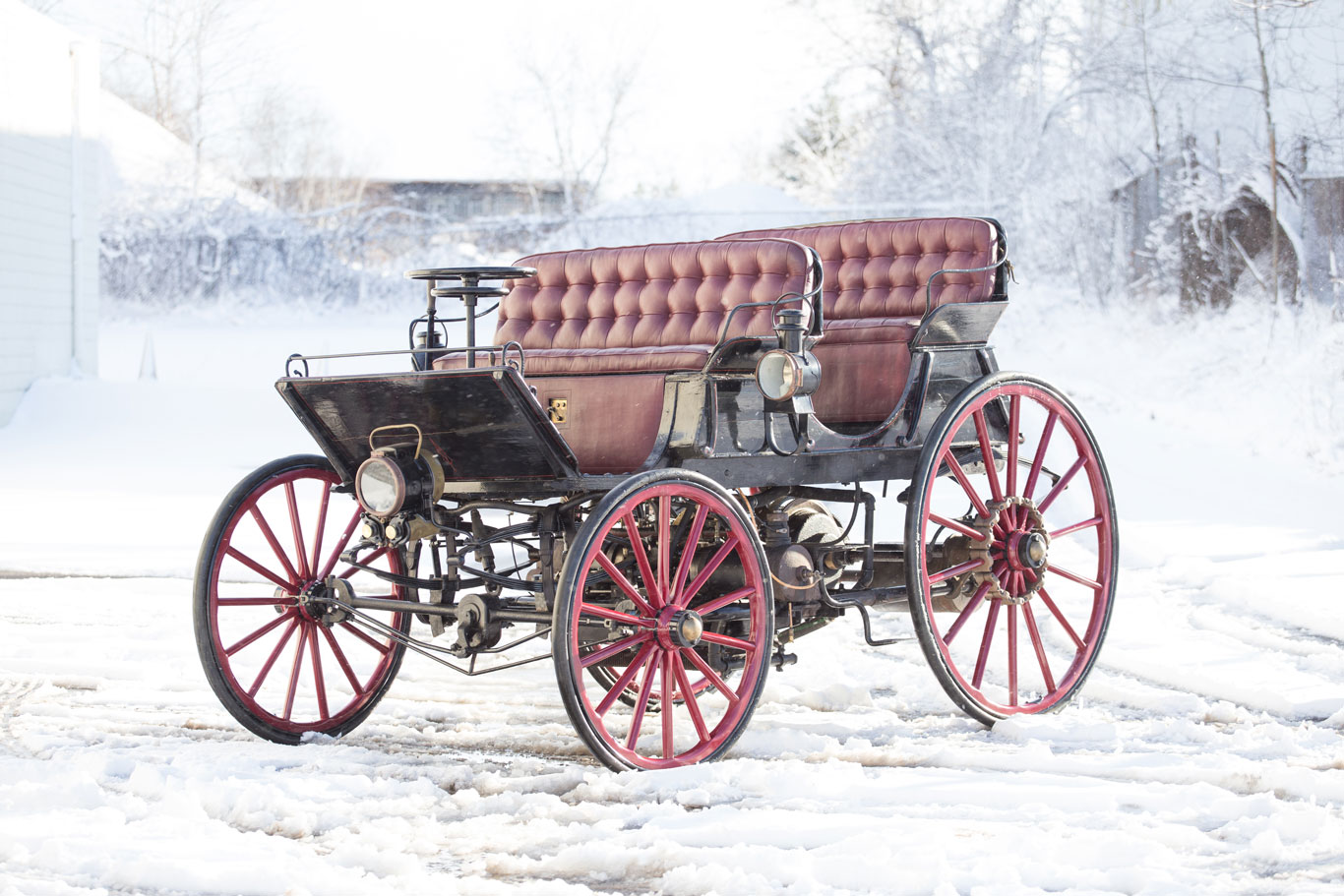Oldest running American car is a… hybrid
And it’s about to be sold at Bonhams Amelia Island auction
Hybrid vehicles are all the rage these days. Package an internal combustion engine with a mechanical drivetrain, add a powerful alternator, a battery pack and one or more supplemental electric motors and you have, eureka, a modern Formula One car, not to mention a crossover kid-hauler.
But this is no Prius; it’s an 1896 Armstrong Gas-Electric Hybrid. Back in the 1890s and 1900s there was no “correct” way to build an automobile. Each designer adapted individual ideas to what they saw others doing or read about in the journals of the day, adding their own concepts, both good and bad. Some good ideas succeeded. Others, both good and bad, disappeared. A few were overlooked only to see their ideas resurrected years later.
So it was with the gasoline-electric hybrid designed by Harry E. Dey and built for the Roger Mechanical Carriage Company by the Armstrong Manufacturing Company of Bridgeport, Connecticut in 1896.
It must have been fabulously expensive, not to mention that its combination of mechanical and electric drive was dauntingly complex. Following this prototype’s construction, Roger Mechanical and Armstrong withered without commercial success. Dey’s concept was parked in a corner of the Armstrong factory, where it languished through subsequent ownership by the Capewell Manufacturing Company in Hartford, Conn. until the 1960s. Discovered by Capewell vice president Henry C. White and brought to the attention of historian Dennis David, it eventually passed through another owner to Robin Loder in the U.K. who commissioned its restoration.
The Armstrong Phaeton had been damaged in a flood and was seriously deteriorated, especially its wood body and some components, but was mechanically complete. Now fully functional and operational thanks to Holman Engineering in Indian Orchard, Mass., it is a wonder of prescient thinking and ingenious implementation.
- The engine, a transversely-mounted twin of 6.5 liters displacement, employs innovations that would not be seen in automobiles for several years including a flyball mechanism mechanical ignition advance, a throttle controlled carburetor, electromagnetically opened intake valves to release compression for starting and timed coil ignition.
- The tube-chassis frame carries the engine as a stressed member with the tubes also forming the engine’s exhaust system.
- The body is sprung on double elliptical leaf springs separate from the chassis and drivetrain.
- Equipped with a steering wheel long before they became accepted, let alone widely adopted.
But it is the hybrid drive that is, literally, a century ahead of its time.
- The engine’s flywheel is a direct current motor-generator. In its motor mode it starts the gasoline engine, then is switched to generator mode to charge the Armstrong’s batteries and operate the ingenious electrically controlled clutch and transmission with reverse gear and three speeds forward.
- The clutch is held open by springs. It is actuated by electromagnets controlled only by a foot pedal (fly by wire, in the nineteenth century) for smooth engagement and force that increases with the speed and voltage of the flywheel dynamo.
- The constant mesh gears likewise are shifted electrically and interconnected with the clutch; select a gear with the rotary wheel below the steering wheel and the clutch and gears synchronize smoothly (like a modern twin-clutch electro-mechanical gearbox) into the selected ratio.
- It is entirely possible to operate the internal combustion engine and flywheel motor-generator in series for bursts of extra power.
Fortunately, both Robin Loder and the subsequent owner have taken pains to preserve much of its exceptional originality. This is not a concours-field showpiece but rather a remarkably preserved example of automotive original thinking that works as intended.
Over the years, they have performed a few selective updates including water jackets for the originally air cooled cylinders, improved lubrication and reinforced rear wheel hubs for the artillery-type carriage wheels (which were designed to carry weight but not transmit driving torque), all of which make the car more reliable and easier to drive
Its history is conclusively complete, including as-found photos and articles in period publications accurately describing its present condition and operation. Dated by the Vintage Car Club in Great Britain as an 1896 model, it is eligible for a start time in the first wave of the London to Brighton Veteran Car Run. Capable of over 20 mph, it should finish well before later Brighton Run entrants, none of which are as technically advanced as the Armstrong.
It was built during the Duryea brothers era, while Henry Ford was still tinkering with his Quadricycle and Ransom E. Olds was building stationary engines, the Armstrong may well be the oldest American car still on the road. Additionally, the 1896 Armstrong gas-electric hybrid’s innovation and sophistication are unmatched by any of its aforementioned contemporaries.


